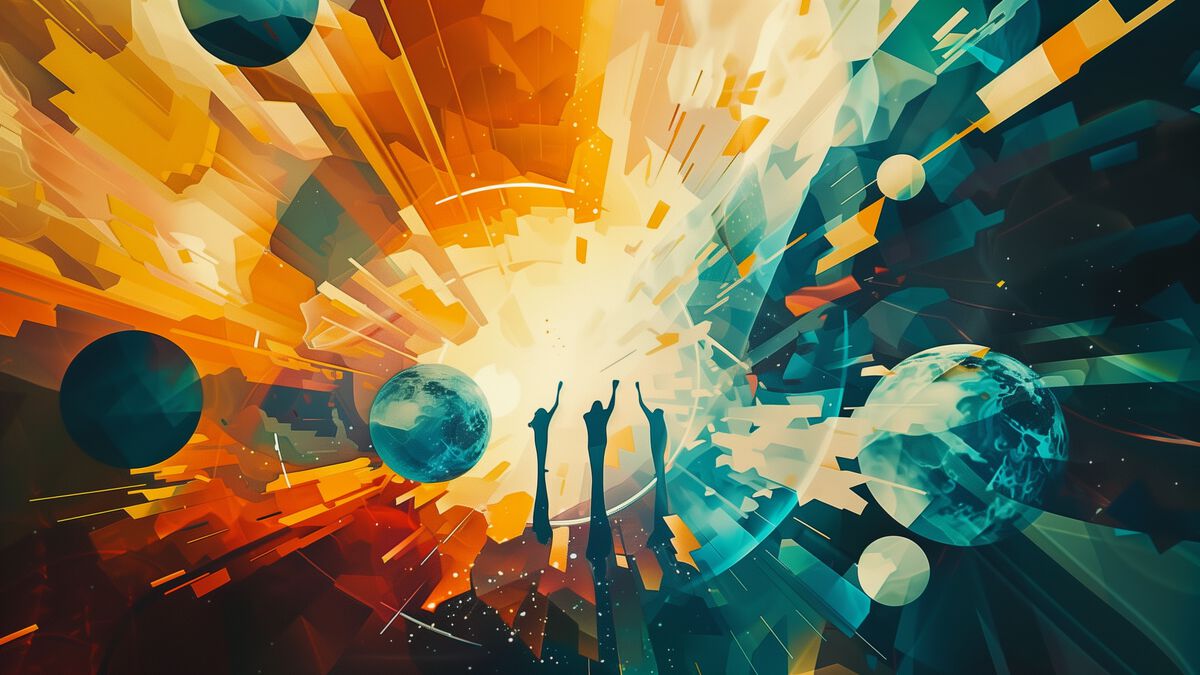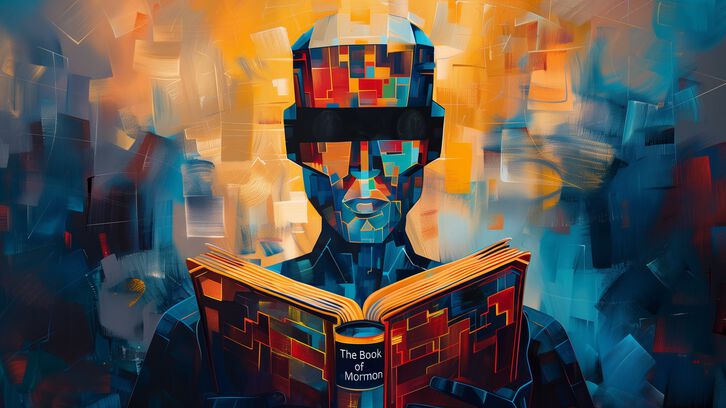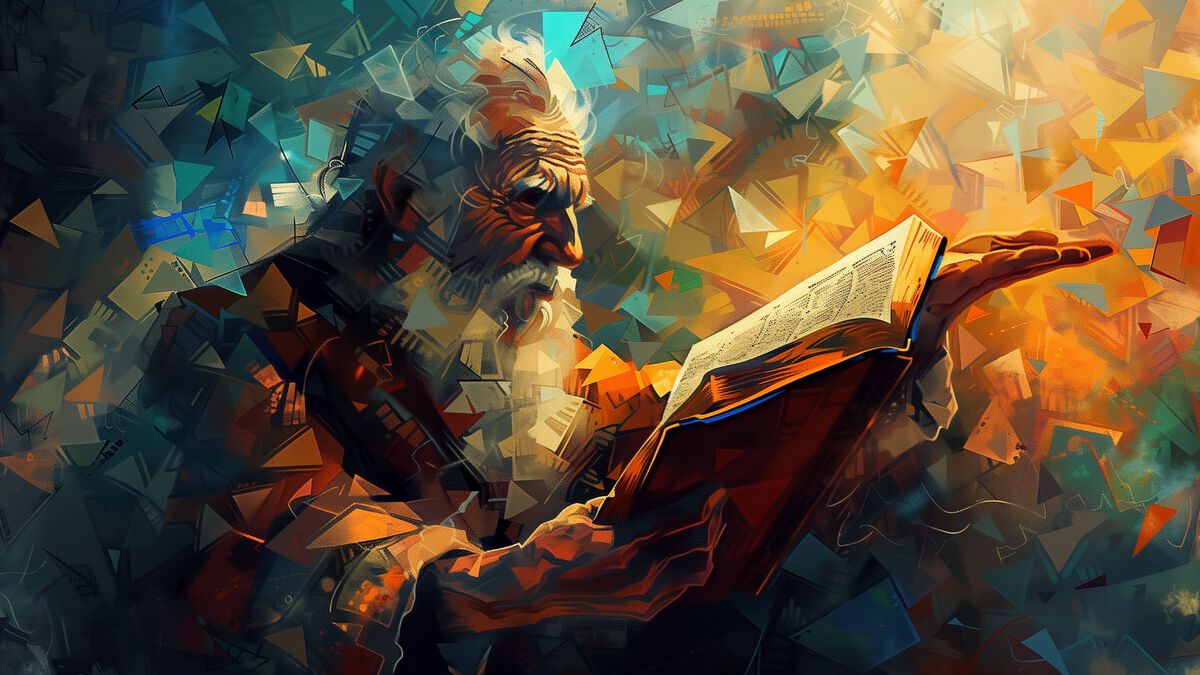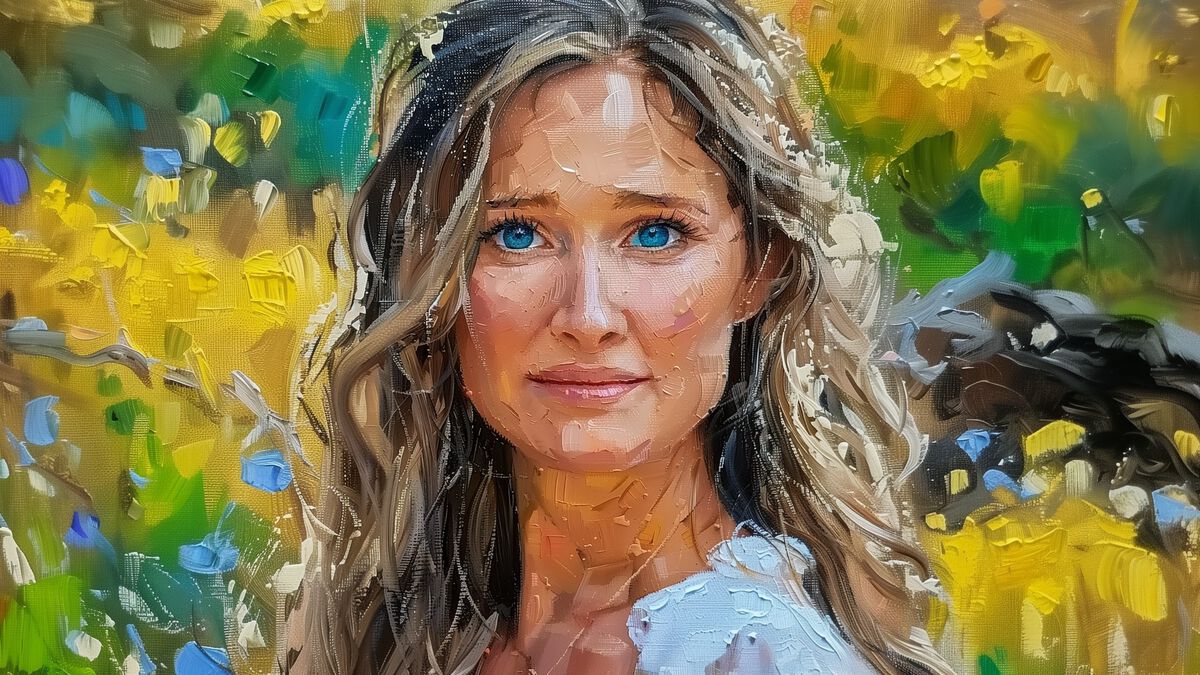Transfigurist Art
Lincoln Cannon
26 May 2024 (updated 21 September 2025)
If you’re familiar with my work, you’ve become acquainted with the ideas of religious Transhumanism, or what some call “Transfigurism.” Transfigurism is a philosophy of transformation, mediated by spirituality and technology. The philosophy includes emphasis on the practical power of esthetics. Esthetics change the way we feel and think, which changes the way we speak and act, and thereby change the world.
True to its emphasis on esthetics, the philosophy of Transfigurism has developed in concert with an emergent art of Transfigurism. An early glimpse of Transfigurist art was seen in the work of Chris Henderson, who designed the cover of Sunstone magazine in which we published the first formal paper on Mormon Transhumanism in 2007. Subsequently, Gary Parker explored various approaches to Transfigurist art through a series of posts to his Transfigurist Art blog during 2012 and 2013, as well as banners and other artwork for conferences of the Mormon Transhumanist Association over the years. More recently, Carl Youngblood has cultivated an expression of Transfigurist art through the design of a new website for the Mormon Transhumanist Association.
Inspired by such efforts, and newly empowered by artificial intelligence, I’ve worked further to develop Transfigurism in a growing body of cybernetic artwork. At a high level, it may be helpful to classify much of my art as an extension of technospiritual abstract expressionism. Let’s take a closer look at its key features, and how it connects with the philosophy of Transfigurism.
Features of Transfigurist Art
A principal feature of my approach to Transfigurist art is the use of bright colors. These colors create energetic and exciting scenes. They cover the whole spectrum, which gives a sense of wholeness. This use of color shows a commitment to life and growth, rather than decay.
The geometric shapes and patterns in my art add depth and complexity. They mix abstraction with recognizable forms, creating a balance between the two. The compositions are full of movement and energy, guiding the viewer’s eye across the artwork. The abstractions also give a sense of incomplete emergence, like engineers building new technology or prophets inspiring people to create a better future.
A common feature in my art is the integration of human figures with technological elements. The figures often represent virtues such as courage, compassion, and creation. Blended smoothly with the abstract and technological elements, the figures can also suggest a harmonious relationship between human virtues and technological progress.
Another common feature of my art is a composition that tells a story. Pieces often explore themes like transformation, enlightenment, longevity, and the quest for knowledge. The use of symbols adds layers of meaning, inviting viewers to think deeply about the work to seek greater understanding.
Historical Influences
My approach to Transfigurist art has drawn from several historical art styles. The emotional intensity and forms of Abstract Expressionism have been a big influence. This style focuses on spontaneous and subconscious creation, which corresponds with a core value of Transfigurism.
Futurism is another influence, with its celebration of modernity, technology, and dynamic energy. However, my art goes deeper by adding spiritual and symbolic layers.
Symbolism also plays a role, with its use of mystical imagery to convey deeper meanings. My work can be seen as a modern continuation of Symbolism, enriched with current themes.
The geometric abstraction of Cubism is also expressed in my art, but with more movement and vibrant colors. And the geometric focus of Constructivism is also evident, but with emotional and spiritual stories added to it.
Philosophical Context
Transfigurist art is deeply connected to Transfigurist philosophy. I express this, in my work, with three common themes.
First is technological evolution. I use images of figures using or integrated with technology, suggesting how technology can transform us. For example, some pieces incorporate depictions of bioengineering, artificial intelligence, or cybernetics.
Second is postsecular religion. With the technological imagery, I combine images of figures engaged in religious or spiritual practices, suggesting their complementarity. Depictions of prayer, meditation, or ritual are examples of this.
Third is Mormon Transhumanism. In addition to general imagery of technology and spirituality, I include symbols from Mormonism, reflecting the particular cultural heritage of our movement. Examples include depictions of seer stones, pioneers, or temples.
The Art of Transformation
As an emerging art style, Transfigurism aims to present a blend of technological progress with spiritual growth. And it has begun generating a unique visual language that speaks of superhuman potential arising from the combination of these categories. My artwork aims to express this philosophy in an evocative manner, provoking and facilitating the very transformation that it depicts.
I invite you to join me in the ongoing development of Transfigurism: as an art, as a philosophy, and as a lifestyle of perpetual becoming in eternal progression. The future is not yet here. Our world is unfinished. And we have work to do.







